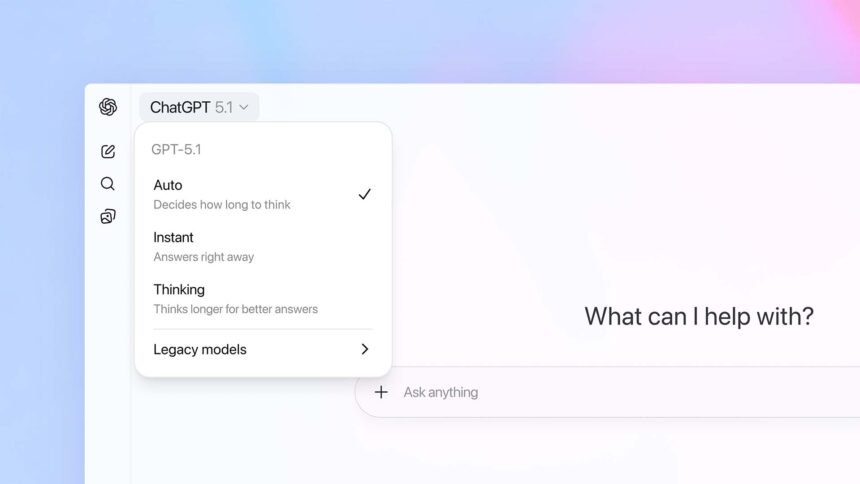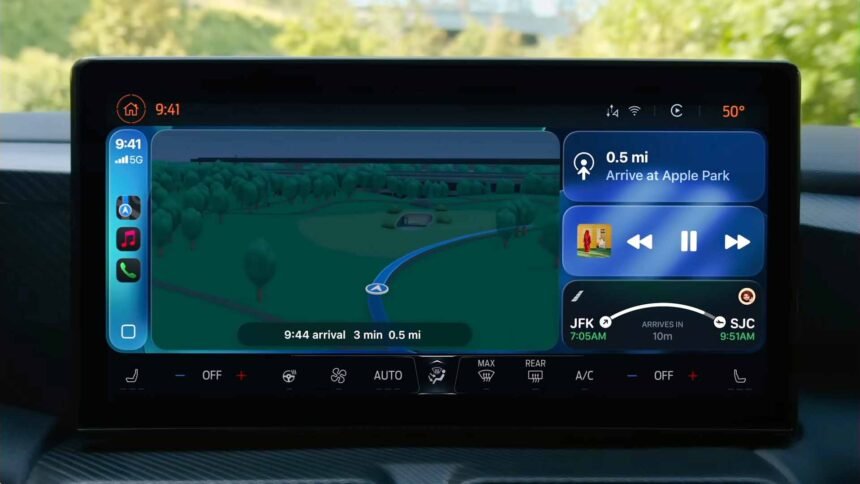The most advanced sport in the world is turning to Artificial Intelligence to solve a problem that many broadcasters have struggled with for decades. Formula One is using AI to create 3-times slow motion replays from standard speed cameras. Having dedicated slow motion cameras is costly and adds more sources to an already stacked board.
Frame interpolation adds extra frames to give the impression of a higher frame rate recording. This gives a smooth playback, avoiding a choppy replay or video stutter. The latest AI systems do a far better job than previous methods of adding frames. This gives F1 viewers a chance to see smooth action replays from any track camera. You can see how this type of AI slow motion works in this Samsung S24 Ultra story and although impressive, it’s underpowered compared to the F1 cameras.
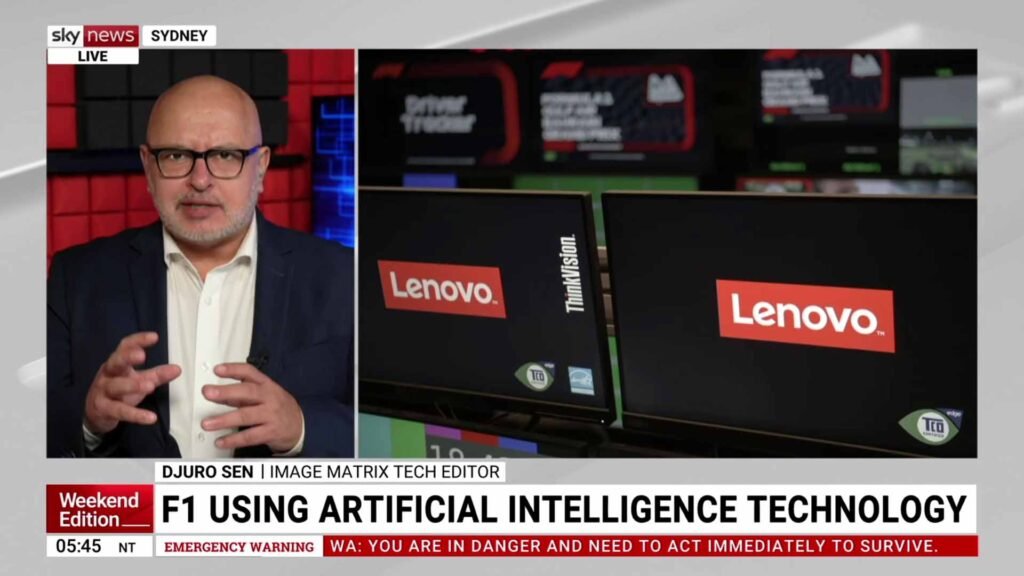
AI is also used on some of the graphics, like car tracking and virtual graphics signage, for up to eight cameras. AI is used to position signage within the frame so it looks real when cars drive in front of it. There’s no doubt AI will make its way into more of the F1 broadcast in the future but these are the main implementations of Artificial Intelligence right now.
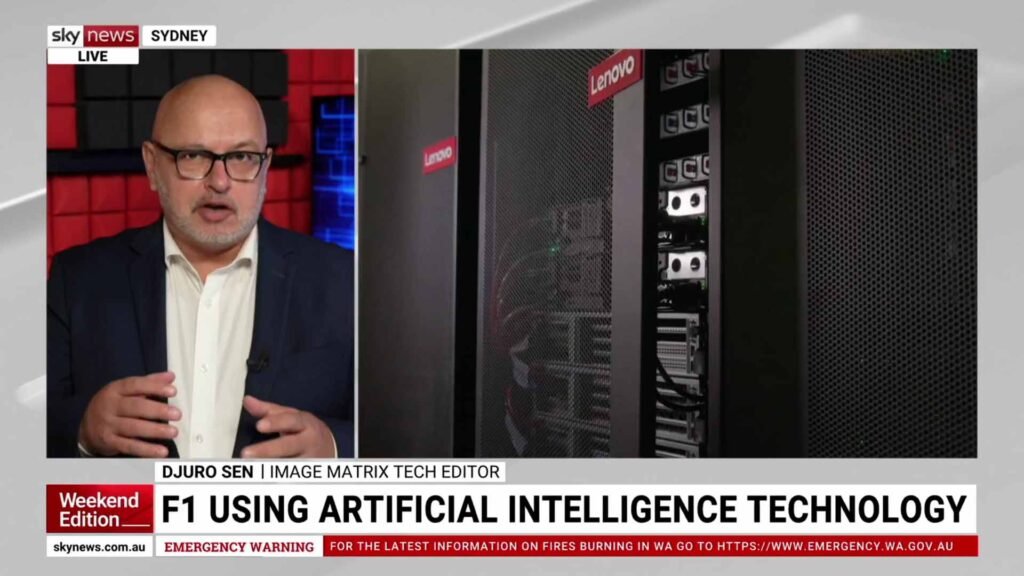
A small group of journalists (including Image Matrix Tech) was hosted by Lenovo at the Australian Grand Prix in Melbourne last week. The company not only sponsors F1, it supplies a vast number of displays, computers and expertise to the race broadcast and technical setup team.
Lenovo consumer and business laptops, plus desktop devices, as well as monitors, tablets, and smartphones are used by F1’s 600 plus staff.

As you can see in the Weekend Edition video above, Lenovo’s High-Performance Computing (HPC) and server solutions are critical to F1’s success. Devices collect on-premise data, improve data storage at the races and help create engaging content.
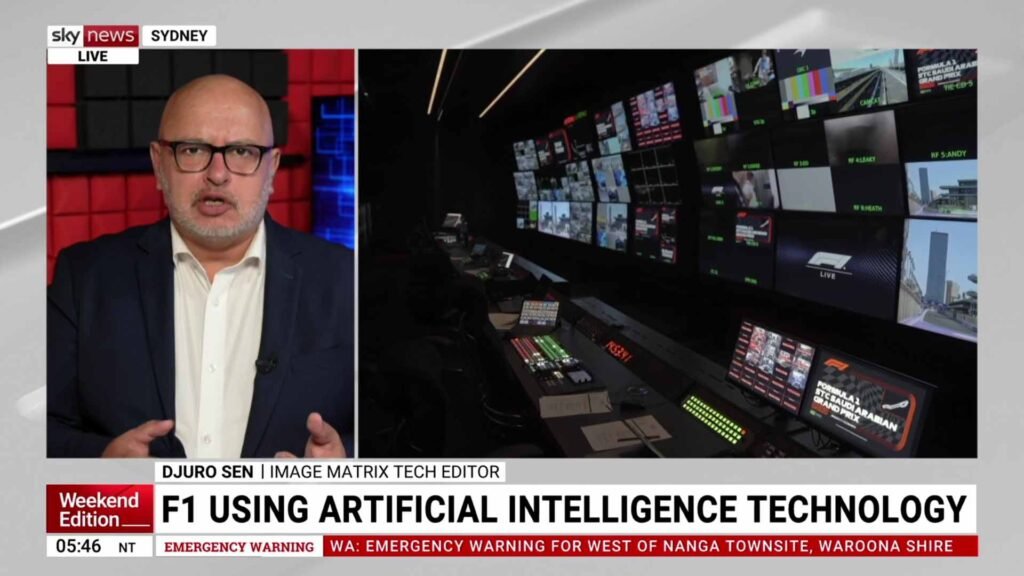
It’s important to note that the F1 broadcast is split between the track setup and broadcast home base in the UK. The ETC (track-side Event Technical Centre) resembles a mobile NASA mission control. Aside from sending all camera feeds to home base, the ETC sends one 4K HDR mixed feed back to the UK where graphics and replays etc are added to the broadcast for the global feed. This local mix is vision switched by the director. F1 is way too fast for a director to call out camera selections to a dedicated vision mixer.
This is where low latency communication is important. The team in the UK needs to make sure it’s not making a mess of the original track feed. This is not easy. Once you start overlaying the live track mix with replays, graphics, team audio and more, you run the risk of breaking the flow of the telecast. But as you can see from Sunday’s race and every race before it, the F1 broadcast team has its act together.

28 UHD track cameras are used at most events, with an additional 4-6 ‘special’ unmanned cameras mounted on bridges, in kerbs, on Armco and bollards. In addition, they use a Giro Stabilised Heli-cam, 1 Cable camera, 5 RF cameras in the Pitlane, 3 pit wall cameras, 2 roam cameras and 2 podium cameras.
Every race, over 93 cameras are deployed on cars, with up to nine cameras per car: forwards and rear from the roll hoop, a face view camera, a helmet camera, pedal camera, as well as an additional camera either on the side of the chassis or nose. All cars also carry a non-live 360-degree camera for extra content, collecting 480GB of footage from the race and at least 72GB of footage from qualifying, as well as special interest drivers for P1, P2 and P3.

“Around 500 terabytes of data is transferred per event weekend”
Around 500 terabytes of data is transferred per event weekend, with bandwidth peaking at around 7.5 Gbps at the start of an event. This is done via fibre optic cable with a 600 millisecond return trip.
The brand-new state of the art production and technology facility in Kent handles most of the processing and publishing systems. This includes remote colour correction of all broadcast cameras. The camera operators at the track control focus, position and zoom. All the other settings, including white balance and exposure are controlled in the UK.
Helicopter vision is handled the same way, remote white balance, remote iris and remote colour grade.

Lenovo’s virtualisation platform provides 1.16 THz of CPU across 448 CPU Cores, 3.5TB of RAM and 480TB of storage. It deploys over 200 network switches carrying 350 VLANs with an 200 Gbps backbone.
147 bespoke microphones are deployed around the track and are fitted on cars across F1, F2, F3, F1 Academy and Porsche, and also to the FIA cars, supplying high quality stereo audio to the production.
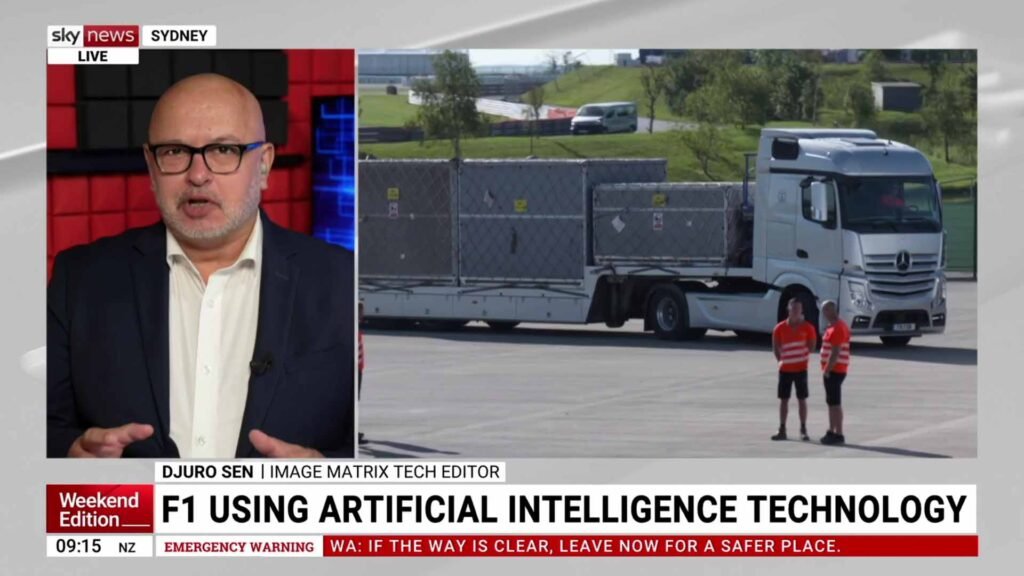
The ETC is the largest, most complex transportable facility of its type in the world. When assembled it covers an area of 25mX15m, and houses 750 pieces of equipment, which run over 40 bespoke software systems. The F1 crew starts assembling the facility 10 days out from event. If there’s an interruption to the link back to the UK, the local ETC is capable of producing the world feed broadcast.
F1 produces over 470 hours of live TV over the season and over 205 hours of post produced content including global news packages, promos, documentaries and features for TV Broadcast.
Image Matrix Tech also asked about drones (of course we did) and F1 is trying to work them into the broadcast but it’s not easy. Some drone work has been done but the speed of the cars, broadcast payload, crowd safety and flight time are all problems that need to be solved before drones come lose to replacing helicopters.
As you can see by the Red Bull video above, the potential is great, but there’s a long way to go for reliable drone coverage in F1.




